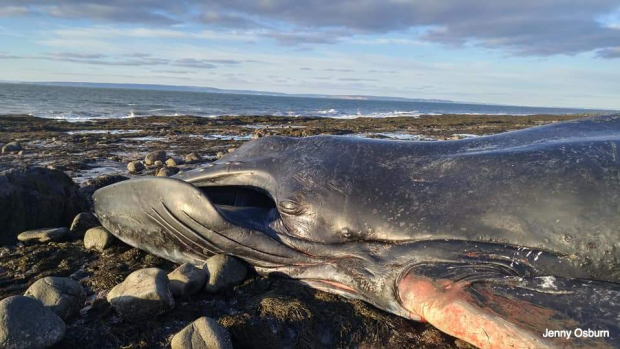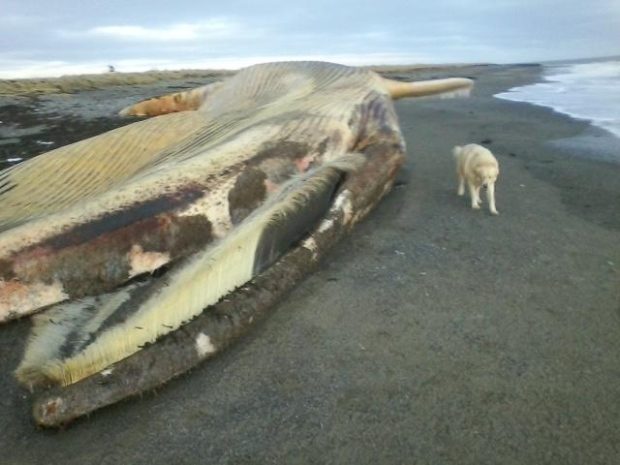
The humpback is one of two large whales found washed up along the Nova Scotia coast this weekend.
"It would definitely take a pretty thorough examination to find out what might have killed it," said Andrew Reid, response co-ordinator for the Marine Animal Response Society (MARS).
He said his organization got the call about the carcass on the Bay of Fundy beach late Sunday. "On first appearance it does look relatively thin-ish but that's something that we'd have to confirm with closer inspection."
Observers at the scene had told Reid the whale is about 12 metres long. At that length, Reid said, the whale has reached maturity.
The Department of Fisheries and Oceans has been notified.
Reid said the time of year, combined with the fact that the whale washed up on a beach that sees some of the world's highest tides, makes the prospect of performing a full necropsy challenging.
"Given the time of year and the conditions on scene, doing a necropsy might be difficult," said Reid.
Individual humpback whales are usually identified by unique patterns on the underside of their tail flukes. The whale's position means the underside of the tail isn't visible, and also makes it impossible to tell if it's male or female.
The Atlantic population of humpback whales is not listed as a species at risk in Canada.
According to the Committee on the Status of Endangered Wildlife in Canada, the whales grow to an average length of 13 or 14 metres and are easily recognizable by their extremely long pectoral flippers that are nearly one-third the length of their bodies.
Second dead whale found
Alex MacLeod, of L'Ardoise, Cape Breton, sent CBC a picture of another whale carcass he found washed up on a beach near St. Esprit on Sunday.
It's not clear which species the whale belongs to, how it died or how long it has been on the beach.
dead whale.

Reid said it's not unusual to get large whales washing up along the shores of Nova Scotia.
"We get several large dead whales washing ashore every year. Bay of Fundy has been relatively quiet the last few years," he said.
"The Gulf was definitely active last year — so it's not uncommon to see a humpback but we don't get that many typically washing up."
In the last year, at least 18 critically endangered North Atlantic right whales have been found dead along the coast of the U.S. and in the Gulf of St. Lawrence.




Reader Comments